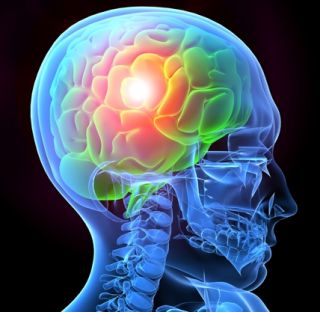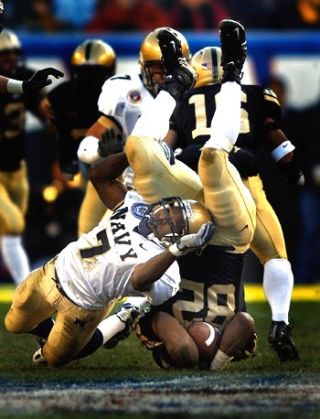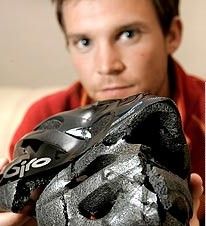Traumatic Brain Injury
Cognitive Rest After a Concussion Speeds Recovery
Student athletes who suffer a concussion should reduce mental activities.
Posted January 7, 2014
A new study titled, “Effect of Cognitive Activity Level on Duration of Post-Concussion Symptoms” suggests that after a concussion, student athletes should reduce mental activities—such as reading, texting, doing homework, and playing video games.
The researchers concluded that limiting cognitive strain after a concussion increases the speed of recovery by up to five hundred percent. The findings were published on January 7, 2014 in the journal American Academy of Pediatrics.
For the study, researchers at Children’s Hospital in Boston tracked 335 patients ranging from age 8 to 23 who had suffered a concussion in the past 21 months. They conclude that "cognitive rest" was best for the first three to five days after the injury and recommend no activities involving concentration or memory during this period.
Adolescents who engaged in the highest level of mental activities took about 100 days on average to recover from symptoms of concussion, compared to about 20 to 50 days for those with lower mental activities in the early days after a concussion.
"Some cognitive activity" is OK; it's just the "high-level" that's detrimental, according to the researchers. Unfortunately, for many student athletes who suffer a concussion doing homework and other academic work is considered high-level, and it's hard to do well in school when you can’t flex your cerebral muscle due to injury.
From the perspective of my book The Athlete's Way and the goal of achieving optimal brain connectivity—I find this study interesting because it illustrates the impact that daily habits have on brain function as a result of brain injury, neurogenesis (new cell growth), neural pruning, and brain plasticity.
Don't Pressure a Brain Injured Student With Academics

The injured brain is extremely fragile and it appears there is a ‘sweet spot’ where engaging limited cerebral functions can be beneficial, but an overload will backfire. It's important for parents, coaches, and teachers to realize that academic pressure can slow the recovery after a traumatic brain injury.
The statistics of traumatic brain injury in teenagers who play direct contact sports like football or hockey are alarming. Soccer potentially causes cumulative brain injuries. Pole vaulting can be extremely perilous, but cycling without a helmet is statistically the most fatal of all traumatic brain injuries.
Classic symptoms of concussion are confusion and amnesia. Other symptoms include: headache, dizziness, nausea or vomiting, and fatigue. Teens may not even realize that any brain damage has occurred. Small hits that don't slow an athlete down at the time may end up causing changes in brain structure and cognitive function. Student athletes who suffer brain injury may wind up having problems with memory, mood or mental performance in later years.

The researchers encourage administrators and coaches to allow student athletes adequate time for mental rest in order to to recover from sports-related concussions. This means dramatically limiting: reading, homework, text messaging, online activity, video games, crossword puzzles or similar activities.
Meehan William Meehan III, director of the Sports Concussion Clinic at Boston Children’s Hospital and co-author of the research, recommends that “For the first three to five days after a concussion doctors recommend patients stay away from activities that involve memory or concentration. After that, students should resume some cognitive activity and start with taking fewer courses and delaying high-stake tests that account for a large part of their grade.”
Reducing Homework After a Concussion Speeds Recovery
“What we usually tell them is do as much school work as you can without making your symptoms worse and without your grades dropping,” he said. “It’s a hard balance to strike, both for the students as well as the school. Our study would suggest that doing some cognitive activity is not detrimental. It’s really just doing the high level [of cognitive activity] that affects your recovery,” Meehan said.

He added that for most concussion patients, the recovery time is fairly short, ranging from a few days to a few weeks. But for a small group of people, the symptoms can drag on. The next steps for the researchers are to discover treatment to shorten the recovery time for these patients and to find out which patients are more likely to have prolonged symptoms.
The researchers conclude, “Parents should have their concussed kids lay off high-level mental activity including homework and reading. But no video games or texting either! Restricting such activities could help kids with head injuries heal as much as five times faster.”
The 5 Riskiest Sports for Getting a Concussion
1. Football

When Boston University researchers autopsied the brains of 85 athletes (including NFL, college, and high school football players) with histories of concussions, they found 80 percent showed evidence of chronic traumatic encephalopathy (CTE), a degenerative brain disease linked to dementia and death.
2. Ice Hockey
A March 2013 study in PLOS ONE found that ice hockey was to blame for nearly half of the almost 13,000 sports-related brain injuries that sent kids to the emergency room.
3. Pole Vaulting
“As a sport, track is low risk for concussions—pole vaulters, though, are at high, high risk,” says Robert Cantu, M.D., and co-director of Boston University’s Center for the Study of Traumatic Encephalopathy. Adding, “Land anywhere but where you’re supposed to—which happens a lot—and you’re in prime position for a head injury.”
4. Soccer

On average, soccer players head the ball six to 12 times during games, where balls can travel at speeds of more than 50 miles per hour. During practice drills, players commonly head the ball 30 or more times. These studies provide compelling evidence that brain changes resembling mild traumatic brain injury are associated with frequently heading a soccer ball over many years, according to researchers.
After studying the brains of 12 soccer players with an average age of 19 who never suffered a concussion but regularly headed the ball, Harvard Medical School researchers found potentially damaging changes in the areas of the brain responsible for memory and higher-level thinking in the soccer players.
5. Bicycling
In 2009, The American Association of Neurological Surgeons reported that more sports-related head injuries occurred on bicycles than in football, baseball, and softball combined.
Conclusion: Wear a Bicycle Helmet!
As an Ironman triathlete I have logged thousands and thousands of miles on a road bike. I have had my share of falls and had two accidents in which I shattered my helmet. Anytime you ride your bike around town or on an open road please wear a helmet.
When Ryan Lipscomb was a graduate student in medical physics at the University of Wisconsin-Madison he was riding down a bike path in Madison on a Friday afternoon.... As he was approaching an intersection, he suddenly saw a speeding delivery truck preparing to make a right turn directly in front of him. He realized immediately that the truck didn't see him and wasn’t going to stop, so he slammed on his brakes, flipping his bike and landing in the street. A few seconds later a truck tire rolled over his head.

This bike helmet saved his life.
Lipscomb relives the moments before the crash saying, “I didn’t see it coming, but I sure felt it roll over my head. It feels really strange to have a truck run over your head.” His bicycle helmet was completely obliterated leaving visible tread marks on the decimated shell. Although Lipscomb suffered a minor concussion—his brain was basically fine. Ryan Lipscomb was taken to a hospital and released about three hours later and went on to get his PhD.
There is a lesson there for commuter and competitive cyclists. With the advent of bike lanes more and more people are using a bicycle for transportation which is great for your health and the environment but please remember to wear a helmet.
A Swedish company called Hödvig recently invented an ‘air bag for the head’ type of ‘invisible’ helmet. Although costly, it is an interesting concept, and one that I hope takes flight. Unfortunately, a lot of my friends think helmets are cumbersome, look geeky, or mess up their hair... obviously all of these excuses pale in comparison to the importance of your brain.
If you'd like to read more on this topic, check out my Psychology Today blog posts:
- "How Does Daydreaming Help Form Long Lasting Memories?"
- "Video Gaming Can Improve Brain Size and Connectivity"
- "High School Athletics Improves Well-Being for a Lifespan"
- “Can Physical Activities Improve Fluid Intelligence”
- “Too Much Crystallized Thinking Lowers Fluid Intelligence”
- “Childhood Creativity Leads to Innovation in Adulthood”
Follow me on Twitter @ckbergland for updates on The Athlete’s Way blog posts.




